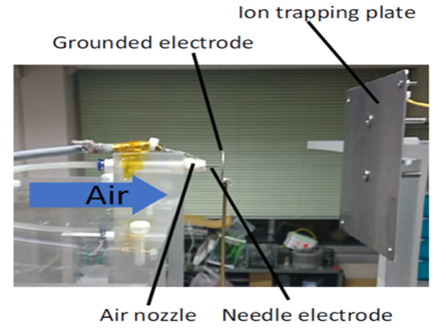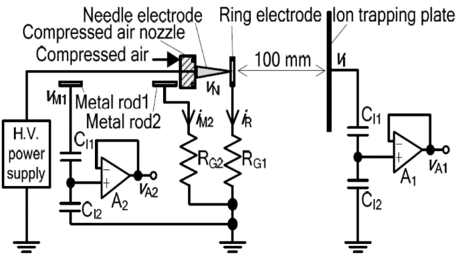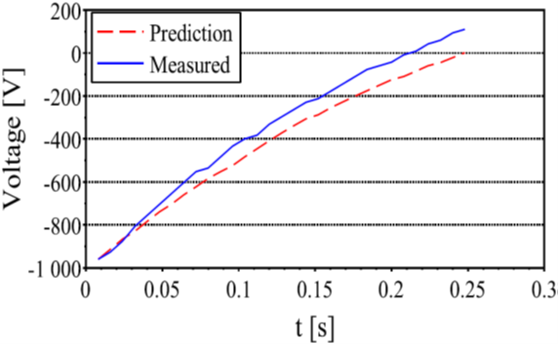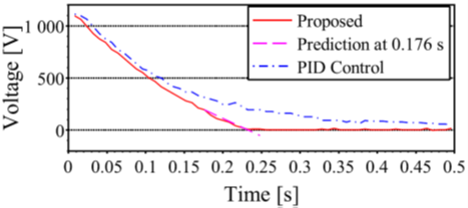Quick and Accurate Static Elimination
In the manufacturing process of electronic devices,
it is essential to prevent electrostatic discharge and electrostatic suction
that lead to malfunction, destruction, and damage of the devices.
Ionizer is a widely used static eliminator that neutralizes the voltage
of charged substances (Figs. 1 and 2).
However, it is often difficult to obtain a sufficient static elimination rate
and residual-charge suppression because the control rules of the ionizer
are often developed by the empirical rules of the manufacturer.
We provide software that gives ionizers
static-elimination-characteristic learning function.
This function allows the ionizers to respond to changes
in the amount of ions generated due to dust adhesion or
deterioration to the discharge electrode,
and changes in static elimination characteristics due to changes in the distance
between the object and the electrode, ambient temperature/humidity,
and material changes in the static elimination object.

Fig. 1 Ionizer

Fig. 2 Cercuit in Ionizer
Figure 3 shows the prediction result of the potential change of
the static elimination target from artificial intelligence.
At 0 seconds, the potential change predicted by artificial intelligence
and the actual potential of the object are in good agreement.
Figure 4 shows the control result of the ionizer utilizing this prediction.
At 0.176 seconds, the artificial intelligence predicted that the potential
of the static elimination object will be almost 0 at around 0.22 seconds,
and the control mode was switched.
After this switching, the object potential was quickly and accurately converged to 0.
From this, we succeeded to reduce the static-elimination time
by 63.2% - 70.7% under comparison with conventional methods.

Fig. 3 Prediction of AI

Fig. 4 Control Result of AI